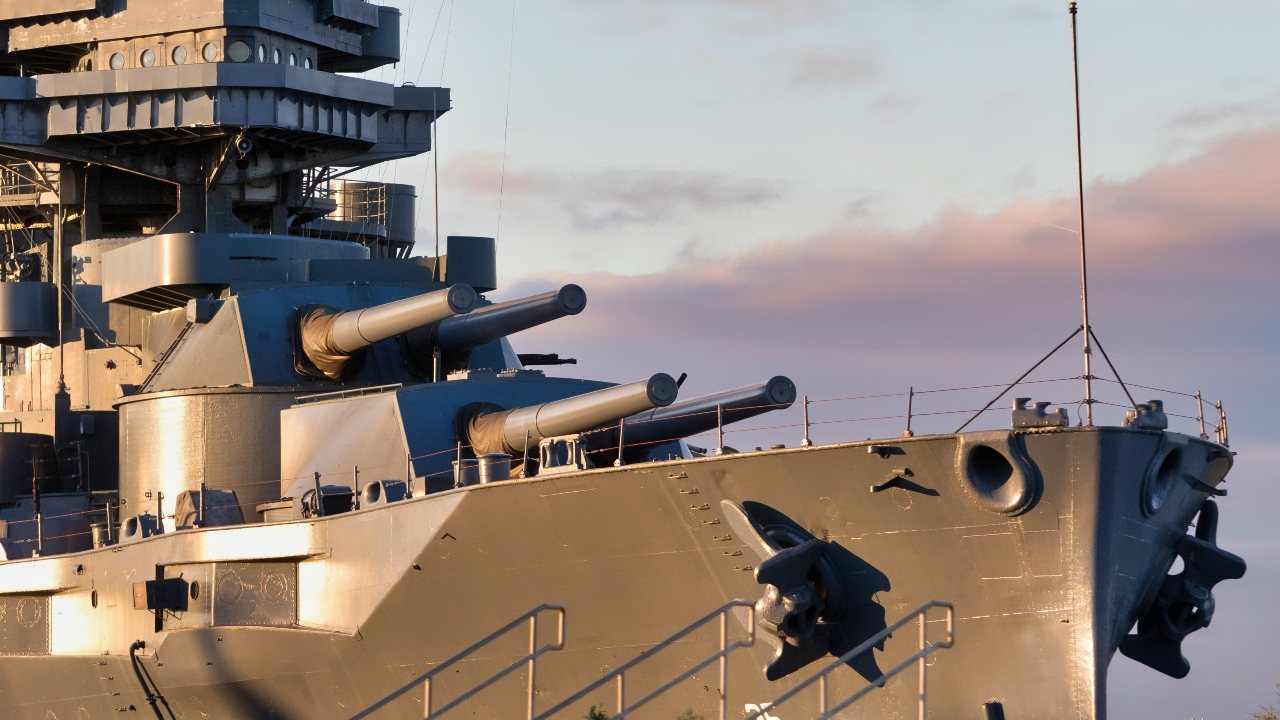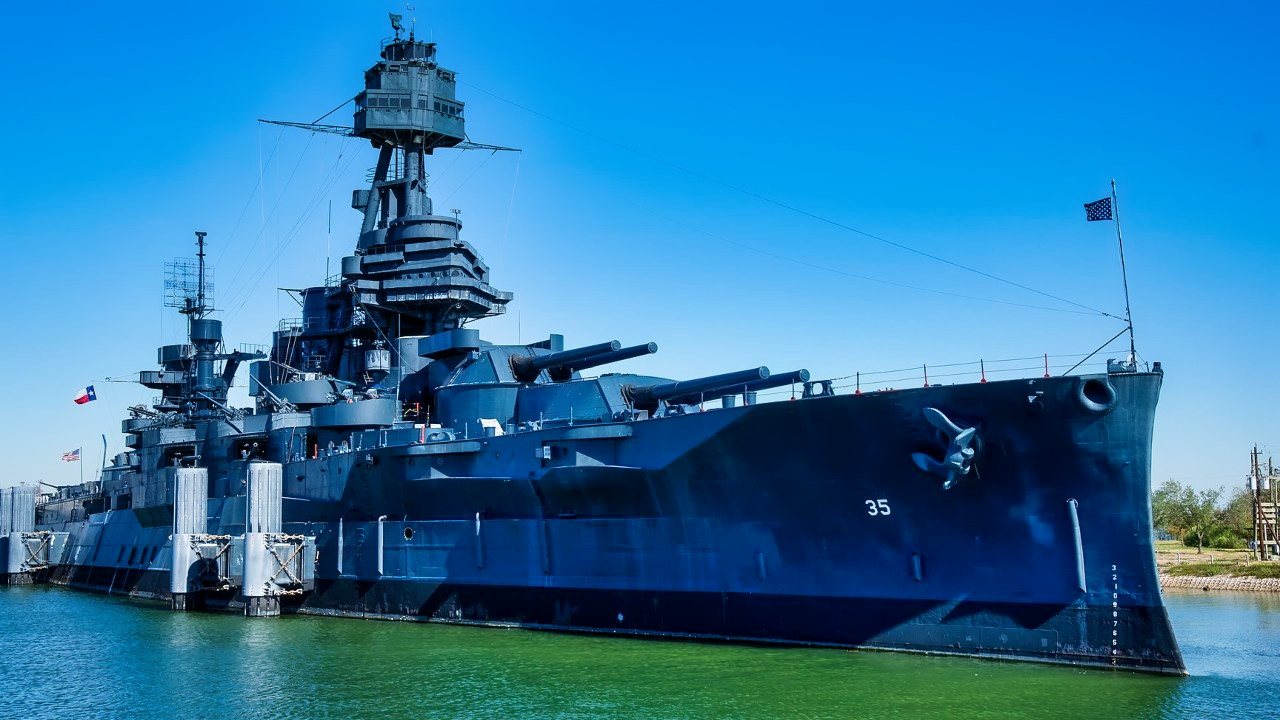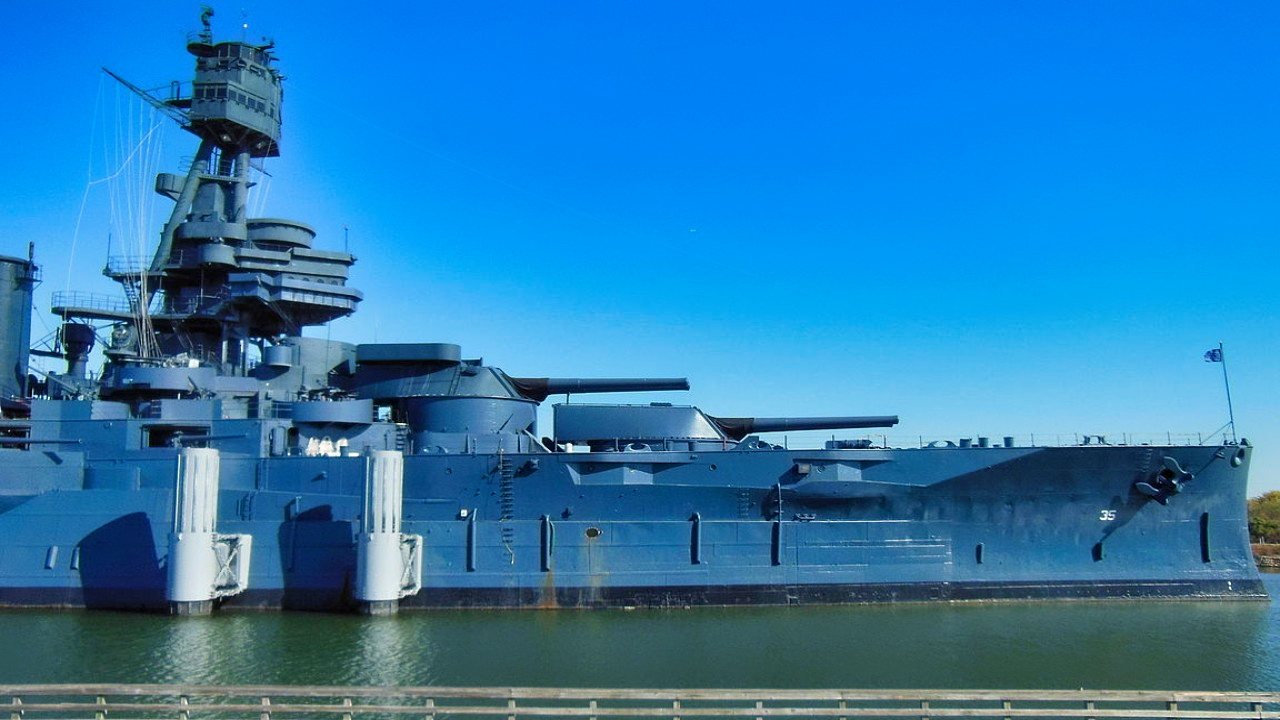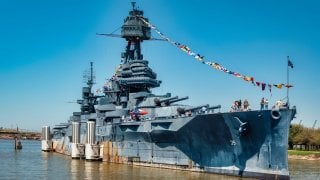Battleship USS Texas Is Making a Comeback of Sorts That Is Truly Historic
The USS Texas, a historic battleship that played significant roles in both World Wars, has returned to water after an 18-month dry dock repair, marking a major milestone in its $75 million restoration journey.
Summary: The USS Texas, a historic battleship that played significant roles in both World Wars, has made a triumphant return to water after an 18-month dry dock repair, marking a major milestone in its $75 million restoration journey. Stationed in the Houston Ship Channel since her decommissioning in 1948, the battleship has been under the care of the Gulf Copper Dry Dock & Rig Repair in Galveston since 2022. Owned by the State of Texas and supported by the Battleship Texas Foundation, the aim is to restore the vessel to its former glory and establish it as a museum, celebrating its rich heritage and pivotal moments in naval history.

Battleship Texas: A New Chapter Begins After Historic Dry Dock
Earlier this month, the historic USS Texas battleship returned to water following a lengthy stint in dry dock repair. For the first time in 18 months, the legendary warship that served both the First and Second World Wars began its re-floating process as part of its staggering $75 million restoration. Since her decommissioning back in 1948, the USS Texas has remained in the Houston Ship Channel—notably the same location where Texian troops surprised and defeated the Mexican army in 1836.
Since her repair work began in 2022, the USS Texas has been undergoing restoration at the Gulf Copper Dry Dock & Rig Repair in Galveston. While the State of Texas officially owns the battleship, its rich history has provided her with a second lifeline. The Battleship Texas Foundation hopes to restore the battleship to its former glory and open it as a museum.
The history of USS Texas:
The former New York-class battleship commissioned in 1914. This super-dreadnought warship constructed for the U.S. Navy was derived in part from the 1908 Newport Conference, which introduced a new method for battleship design. As other countries began building larger and more formidable warships, the Navy desired a fleet capable of carrying larger batteries. Germany’s Navy was equipped with the 30.5cm (12in) guns and the Royal Navy incorporated the BL 13.5in Mk V naval gun to its new Orion class. The New York-class ships therefore were designed to feature ten 14in (356mm)/45 caliber Mark 1 guns, which could fire 1,400 pound armor-piercing shells at a further range. Additionally, Texas and her sister ship New York were fitted with four 21in torpedo tubes for the Bliss-Leavitt Mark 8 torpedo.

Operational History for USS Texas Battleship:
Shortly after Texas’s commissioning, the battleship was deployed to Mexican waters as part of the Navy’s Atlantic Fleet in response to a crisis. Mexican federal troops reportedly had detained an American gunboat crew at Tampico, forcing then-president Woodrow Wilson to act. While the issue was resolved rather quickly on the ground, Wilson used the opportunity to apply pressure on the Huerta regime, which was believed to be undemocratic. He commanded forces to seize a customs house off the Mexican coast in retaliation.
Two years later, Texas would become the first U.S. warship to sport anti-aircraft guns with the addition of two 3 in-50-caliber guns on platforms located on top of the boat canes. This reoutfitting would become critical as the outbreak of WWI was imminent.
During the First World War, one of the gun crews trained aboard USS Texas spotted a surfaced German U-boat while assigned to the merchant vessel Mongolia. The crew member opened fire on the enemy ship, firing the first American shots of the war while simultaneously averting an attack on the merchant vessel. During the Second World War, Texas contributed to efforts in preparation for the invasion of Port Lyautey in French Morocco, where she fired 273 rounds.

Considering this 101-year old battleships’ incredible history, her preservation is paramount.
Two years later, Texas would become the first U.S. warship to sport anti-aircraft guns by adding two 3 in-50-caliber guns on platforms located on top of the boat canes. This reoutfitting would become critical as the outbreak of WWI was imminent.
About the Author: Maya Carlin
Maya Carlin, National Security Writer with The National Interest, is an analyst with the Center for Security Policy and a former Anna Sobol Levy Fellow at IDC Herzliya in Israel. She has by-lines in many publications, including The National Interest, Jerusalem Post, and Times of Israel. You can follow her on Twitter: @MayaCarlin.
All images are from Shutterstock.

